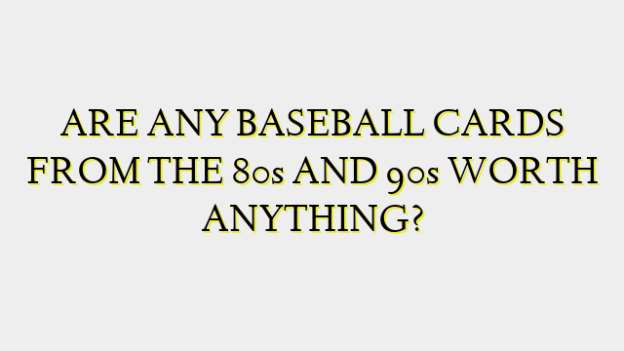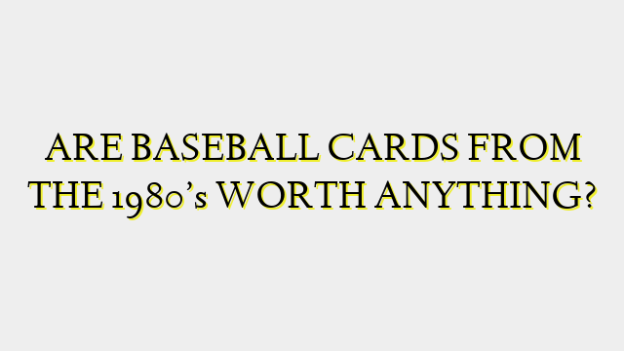Baseball cards from the 1990s can potentially be worth money, but whether any individual card from that era has significant monetary value depends on several factors. The 1990s saw major shifts in the baseball card industry that impact the current collectability and value of cards from that decade.
In the early 1990s, the baseball card market was in a massive boom period fueled by the tremendous popularity and high prices fetched by rookie cards of stars like Ken Griffey Jr., Frank Thomas, and Chipper Jones. The bubble burst in the mid-90s as an overproduction of cards flooded the market. Many consider 1994 to mark the end of the “junk wax era” as it corresponded with a decline in card values and the end of the monopolistic trading card industry that had been dominated for decades by Topps and Donruss.
The overproduction of common cards from this period means that most basic cards from sets like Donruss, Fleer, Leaf, Pinnacle, and Upper Deck Series 1 & 2 have very little value today, sometimes being worth just a few cents in near-mint condition. There are still certain 1990s cards that can sell for significant money, especially those meeting certain collectability criteria. Here are some key factors that determine if a 1990s baseball card might be worth money:
Rookie/Prospect Cards: Cards featuring the rookie seasons or early career years of all-time great players who went on to Hall of Fame careers remain highly valuable from the 1990s. Examples include a Ken Griffey Jr. upper deck rookie (1989) which can fetch thousands, or the ultra-rare Chipper Jones Leaf rookie which has sold for over $10,000. Early cards of emerging young stars like a Carlos Beltran rookie also retain value.
Premium/Parallel/Autograph/Memorabilia Cards: Within mainstream sets, shop for rare parallel or short-printed versions that are much harder to obtain. Autograph or memorabilia cards from the era can also sell for hundreds or more depending on the player. Pinnacle and Upper Deck brands tended to feature these premium card types.
Star Players: Popular players who were in their primes during the 1990s like Barry Bonds, Greg Maddux, Cal Ripken Jr., Derek Jeter, etc. have cards retaining value, especially flagship cards from their best seasons. High-grade examples can sell for $50+ each.
Traded/Update/Rookie Variation Cards: 1990s versions of these special subset cards featuring rookie seasons, new teams, or milestone stats hold collector interest and typically outperform their base counterparts.
Error/Variation Cards: Mistakes happen in card production and rarer miscuts, pattern errors, or variations on uniform/statistic details become desirable collector oddities.
League Leaders/Award Winners: Anyone who led major statistical categories or won awards like MVP has cards retaining long-term interest.
Expos/Rockies/D-backs/Marlins: Teams joining the MLB in the 1990s and early 2000s have rookie cards maintaining value as their players were evenly distributed across early sets.
Graded Cards: Professional grading gives buyers confidence in a card’s condition and authenticity, helping premium graded examples far outperform raw cards in terms of profit potential.
While common 1990s baseball cards have little monetary worth, key rookie cards, stars of the era, and premium or unusual inserted cards can still hold significant collector value – especially in top grades. For investors, high-grade exemplars of the most coveted 1990s rookie cards remain the safest long-term investments. With patience, the right 1990s baseball cards certainly have potential to increase substantially in value over time.




